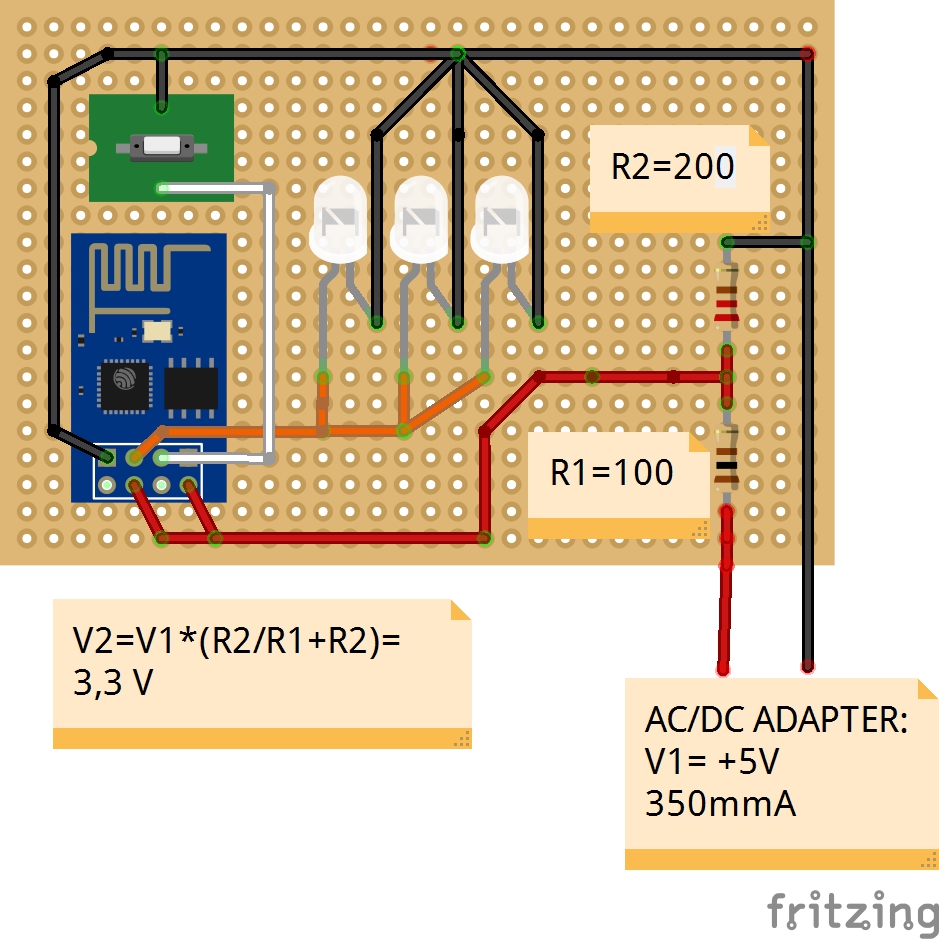I'v made an ESP8266 with a small program in it that lights up 3 white leds when get some data from internet.
Powered with the Arduino Uno 3.3 Volt everything works fine.
But I want to use it with an AC/DC transformer taken from an old phone which give +5V and 350mmA.
I want to connect it to the ESP8266 and I'm trying to do this with a resistance divider.
Here is the question: is everything safe with my circuit? I've read the mathematical expression on internet and I'mot sure because with that formula I can use also resistors of 1Kohm and 2Kohm, but I didn't understand which is the difference.
Can someone help me?
Thank you.
Here is the sketch, how I did it (the button is for uploading code in the ESP8266):
